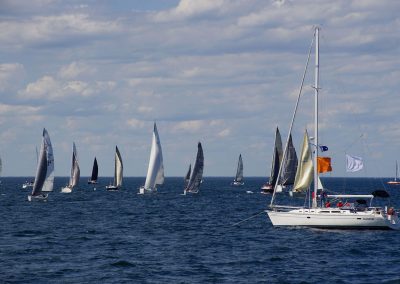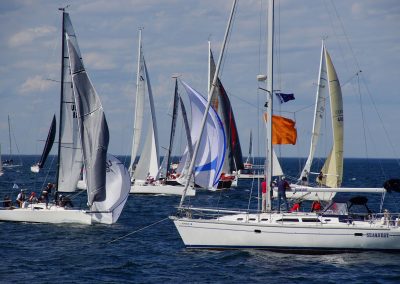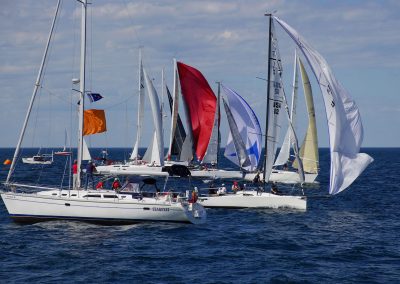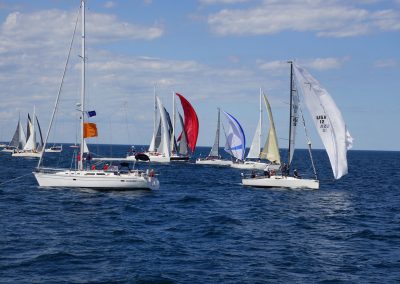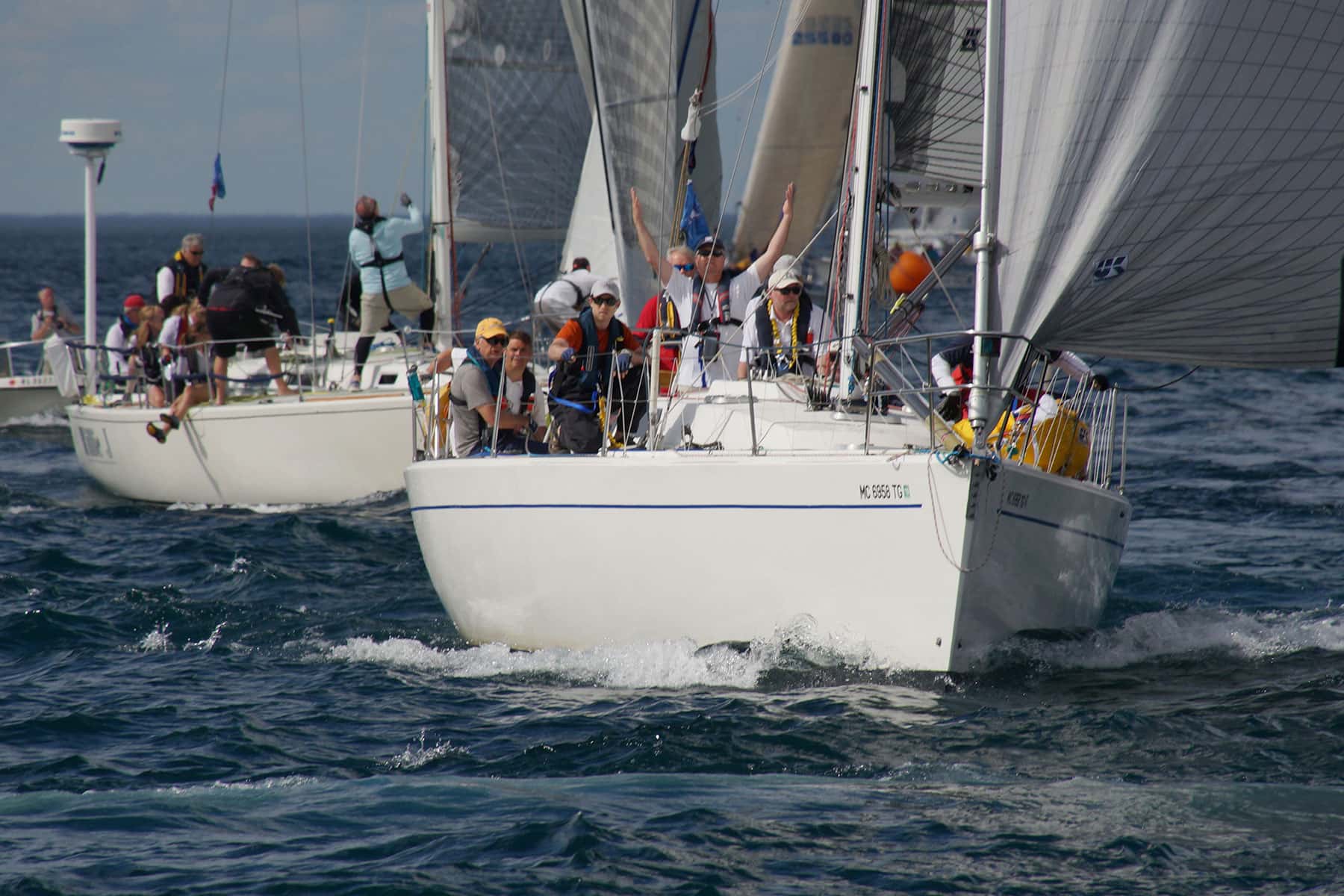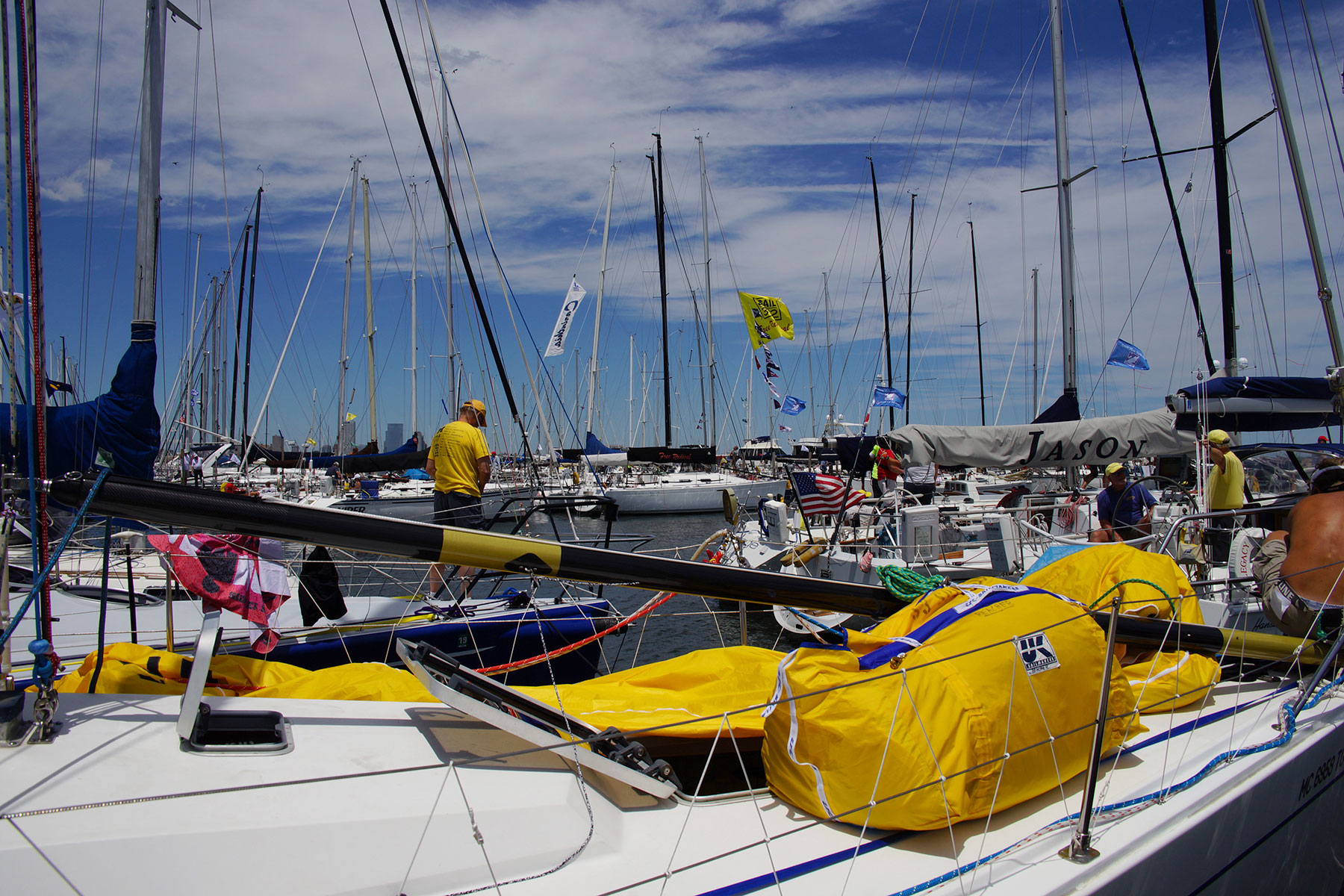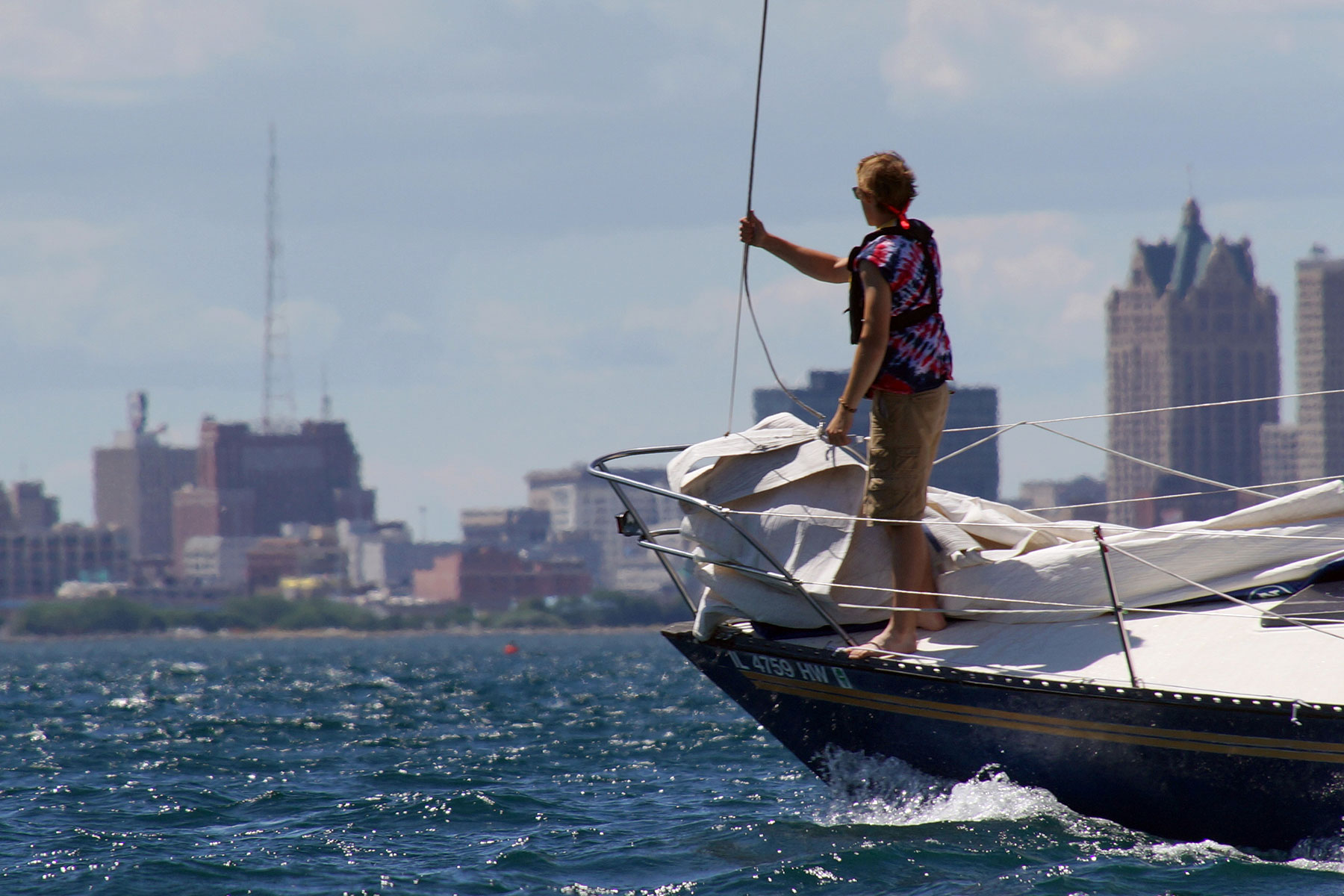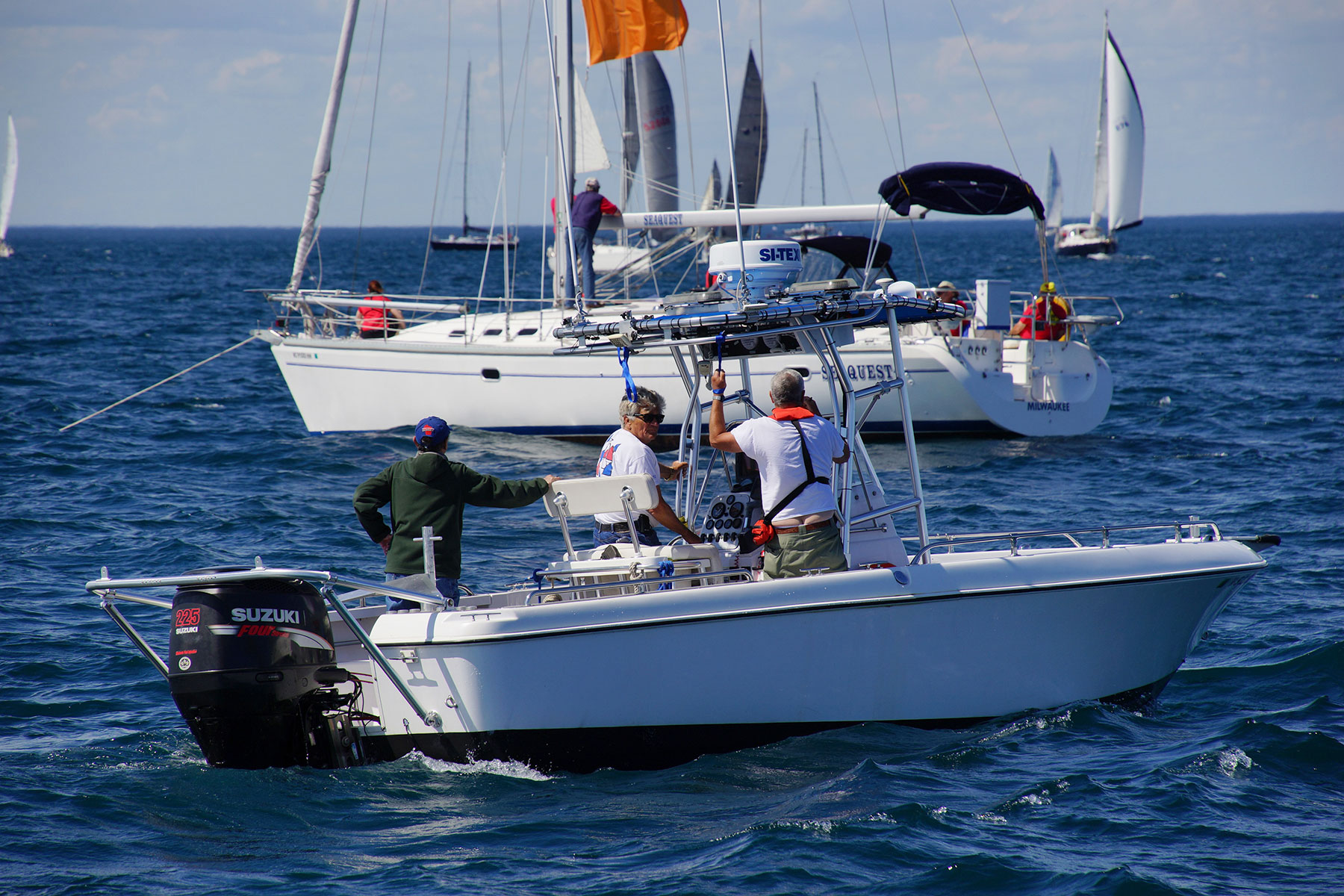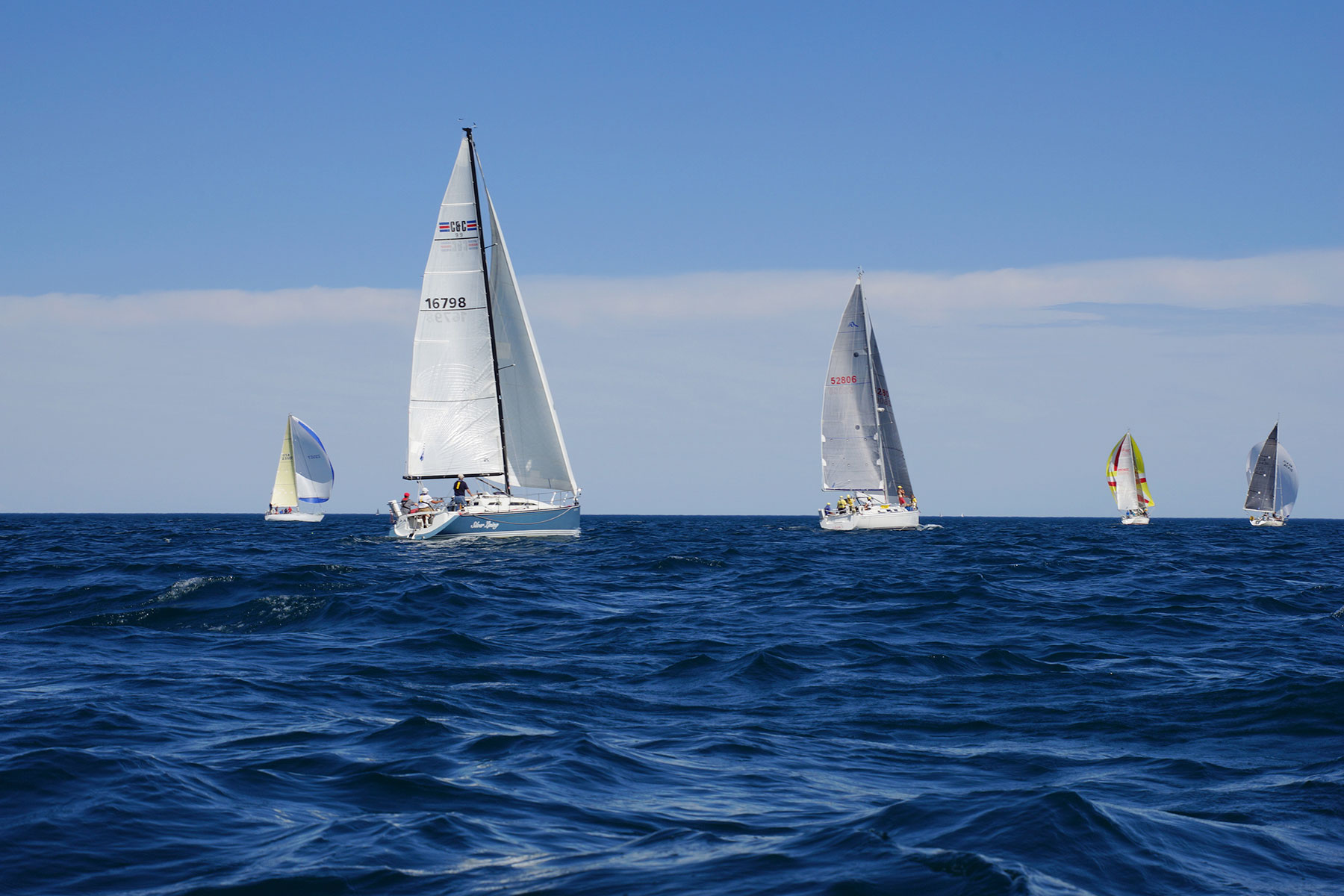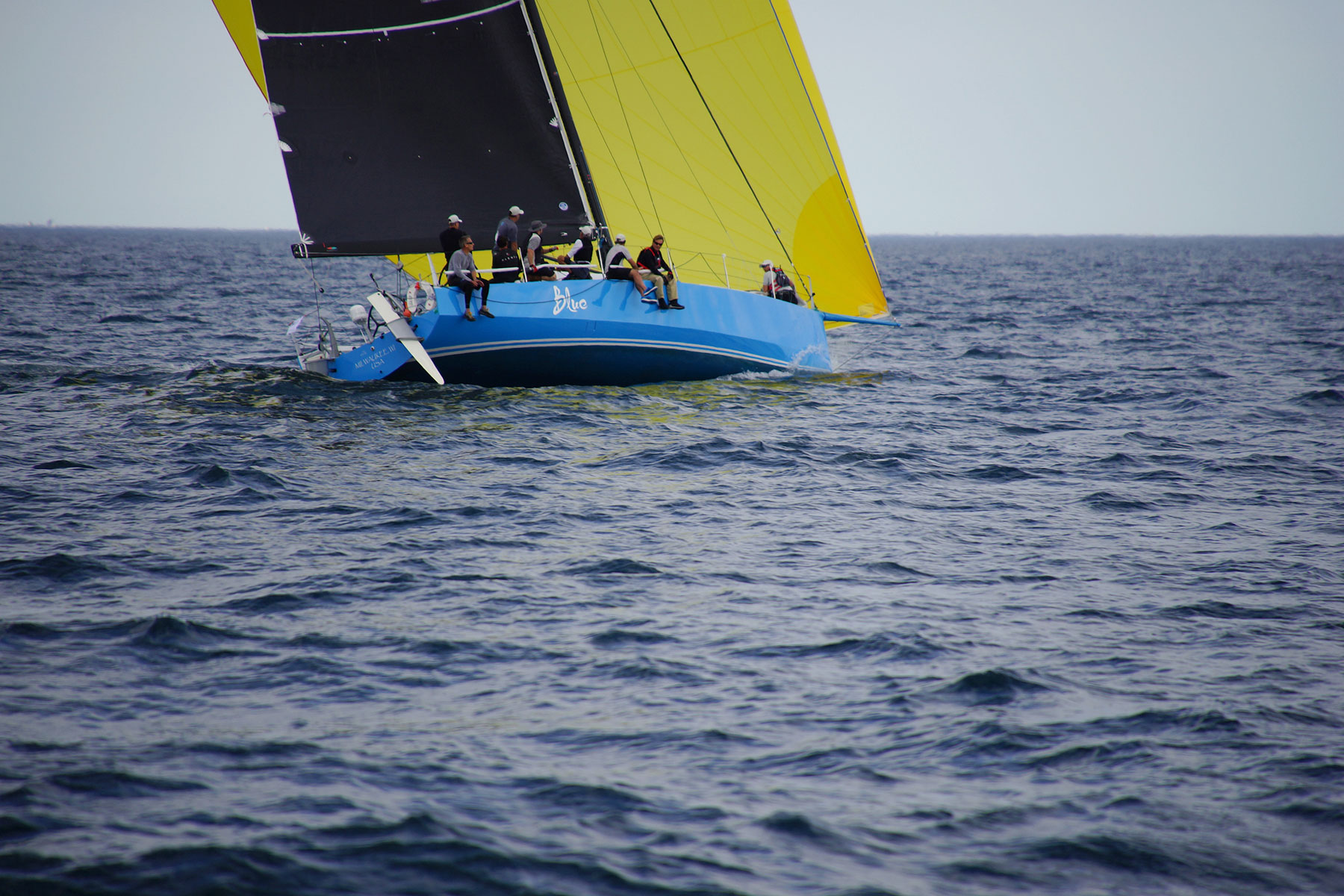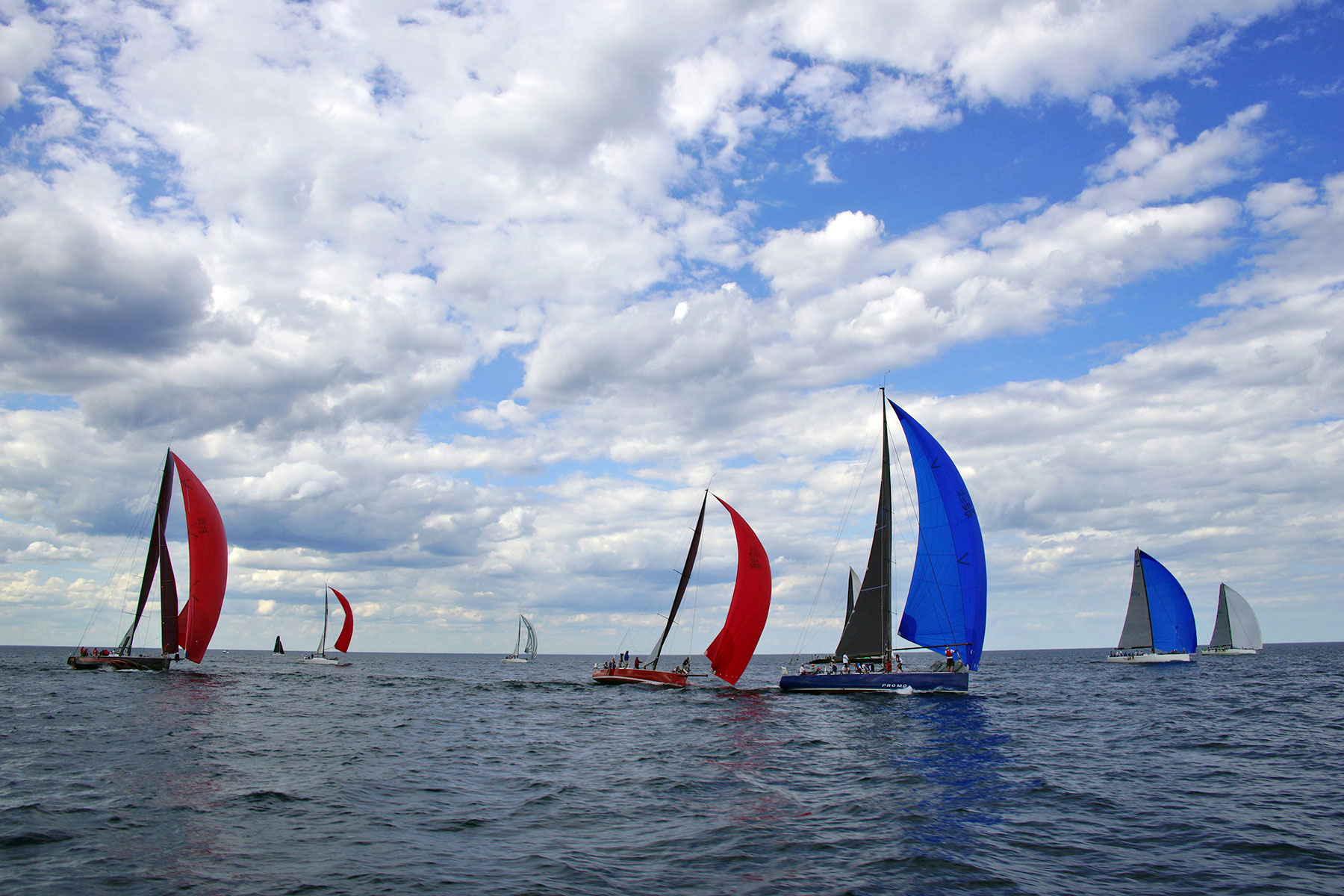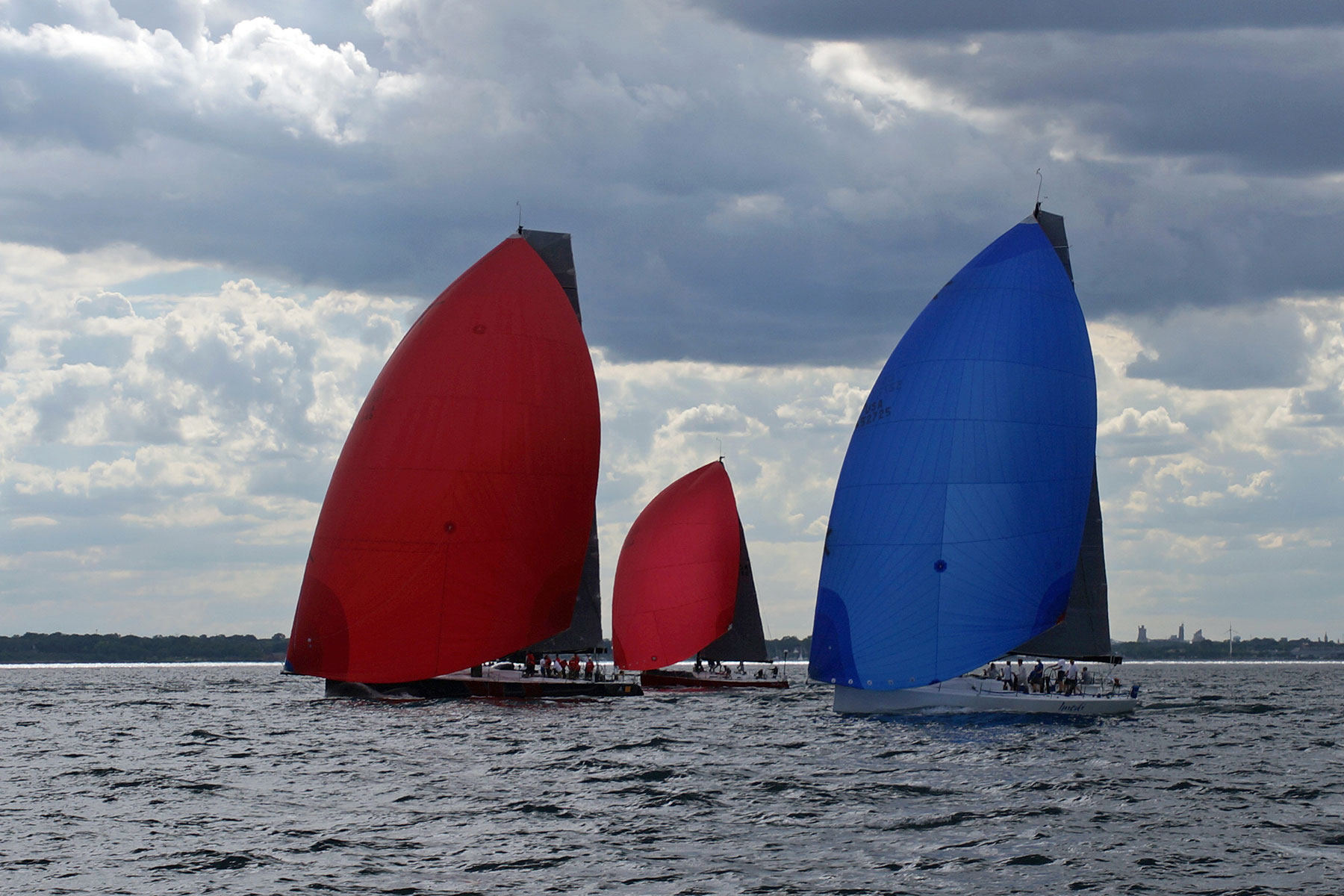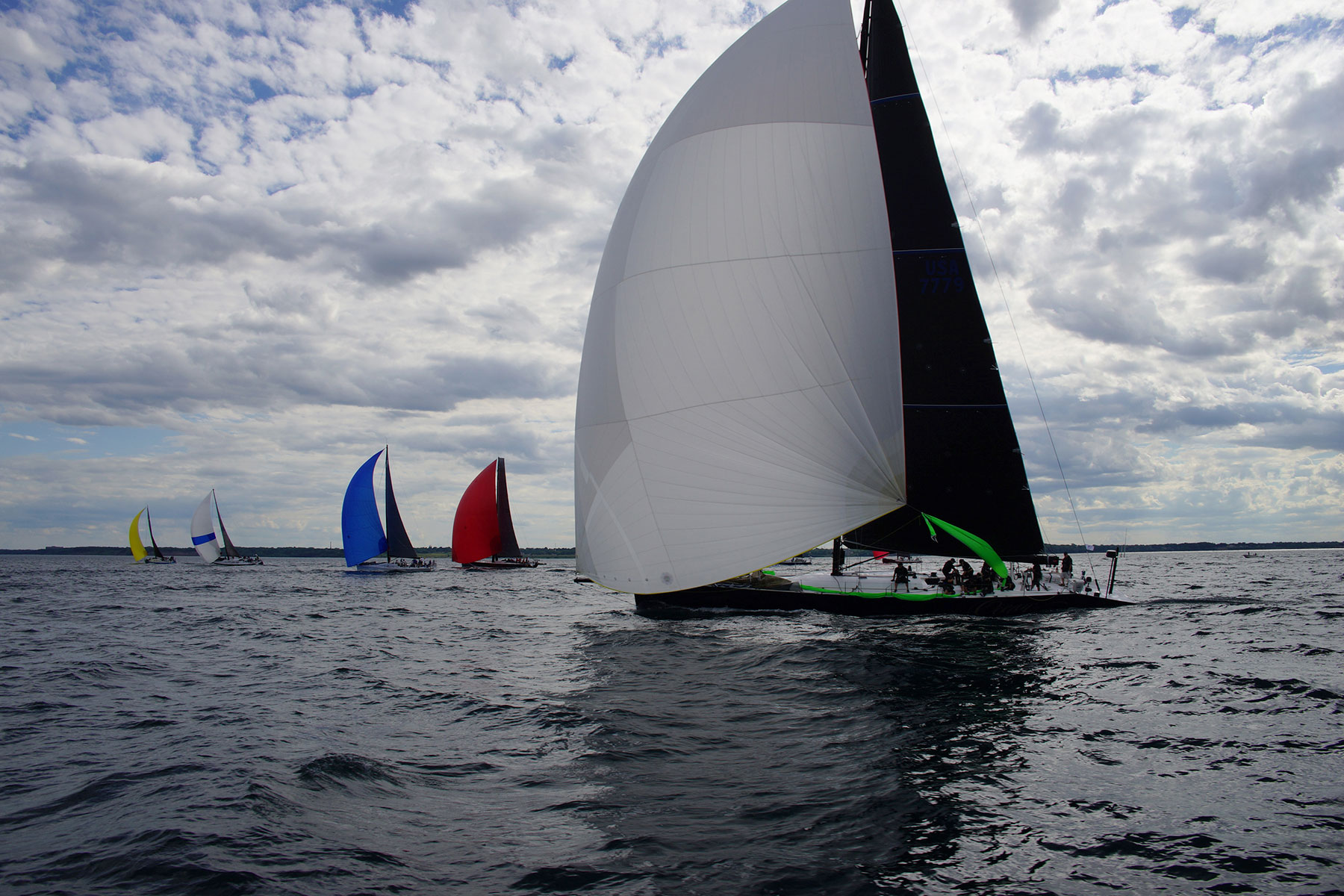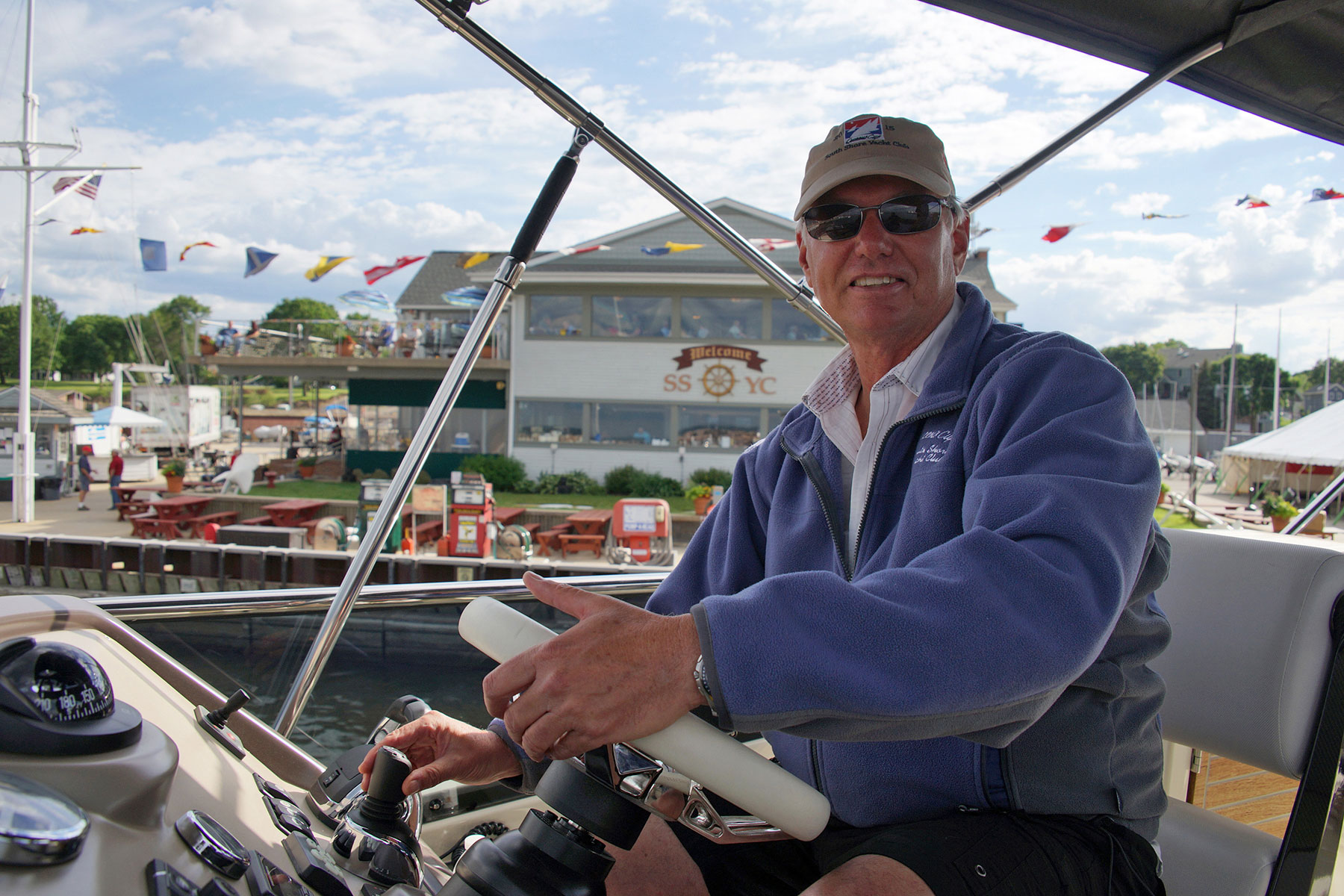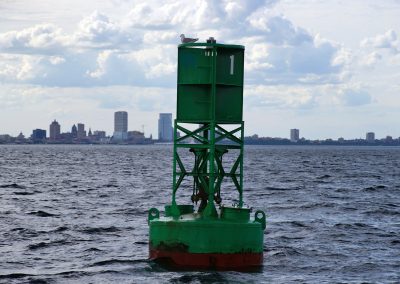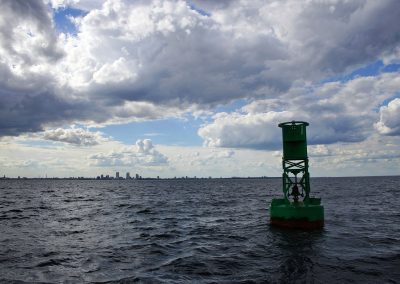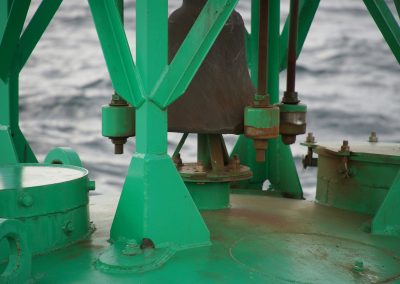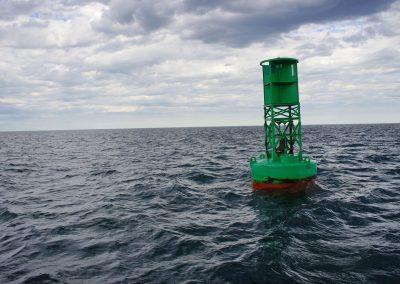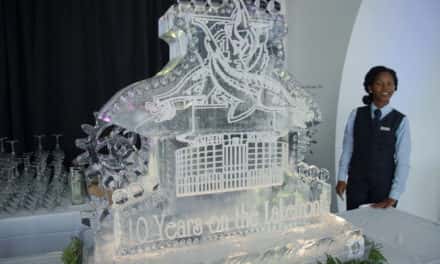
Giant sails were scattered along the horizon of Milwaukee’s Lakefront as the annual Queen’s Cup, one of the most prestigious yachting events in the nation, launched across Lake Michigan on June 23.
The sailing race stretched 76 nautical miles from the South Shore Yacht Club (SSYC) to the finish line about ten hours away in South Haven, Michigan with close to 150 vessels competing in 13 division classifications.
“This is our 79th sailing of the Queen’s Cup Race,” said Jerry Kedziora, Vice Commodore and Special Events Committee chair. “The racers sail for an overall trophy called the Queen’s Cup, which was originally awarded to an American yacht named Silvie that won second place in England. The trophy was first awarded in 1853, and it’s one of the oldest yacht racing trophies in the world.”
In technical terms, the cup was not a Queen’s Cup, because only British yachts were able to win a cup offered by Queen Victoria. But the name reflects her involvement with trophy itself, which has a long and interesting history.
The American racing sloop Silvie unexpectedly won second place on August 19, 1853 in a regatta scheduled by the Royal Yacht Squadron that was raced off Cowes, England. With no provision for a win by foreigners, the Queen had a special trophy cup commissioned. It was brought back to the New York Yacht Club, Silvie’s home port, and the relic went through a couple periods of obscurity.
While cleaning out a family storeroom, Walter Hull discovered an exquisite rosewood box holding the cup. Hull treasured it for the rest of his life until 1987 when he deeded it to South Shore Yacht Club for an annual race across Lake Michigan that always started from the South Shore Yacht Club and was open to all yachts of a recognized yacht club on the Great Lakes.
The whole concept of yachting can be a little intimidating, and most people do not feel it is accessible because the huge boats are expensive. But for the owners, it is how they and their families spend time together instead of buying airline tickets for trips or making other investments.
“The South Shore Yacht Club is a great opportunity to connect with folks from the Bay View neighborhood and people in the sailing community,” said Patty Thompson, Membership Committee Chair. “We get a lot of visitors from all over the place, the slips are filled with people from Michigan and the Chicago area. They come here specifically so they could start to sail across the Lake. So the Queen’s Cup is another chance for us to open up our doors and be hospitable. We try to make sure people know that they’re welcome here.”
Individuals do not need to own a boat to be able to sail either. Many SSYC members are very generous with their boats. Thompson said that if anyone wants to go sailing they should show up at SSYC and ask to join a sailing crew.
Competitive sailing has been a catalyst of economic development in coastal cities. Both Bay View and downtown Milwaukee directly benefit from the financial stimulus that the Queen’s Cup brings to local businesses every year. Visitors and sailors alike are often amazed at the ability to go boating on such a large reserve of freshwater.
“As a matter of fact, about 40% of the SSYC members are social members. A lot of them have the opportunity to race on other people’s boats, because we have a very active racing fleet,” added Kedziora, who has been sailing since the mid-1970s.
SSYC was founded in 1913, and in early years of the Queen’s Cup race the trophy was awarded according the Universal Fleet Rule that dominated racing on Lake Michigan. Over time it became less popular and the number of cruising-type boats increased. The South Shore Yacht Club Race Committee decided to award the cup alternately to the different cruising fleets.
“The South Shore Yacht Club been around for over one hundred years, and I think it’s had a big influence on the Bay View community all during that time,” said John Liebenstein, who started sailing in his 40s and continues to compete at 80, with a win in his division at a previous Queen’s Cup. “My mother used to come to dances on the old lumber schooner that was semi-sunk for what was the first yacht club, LILLY E, and she used to tell me about those experiences when I was growing up.”
The first race was took place in 1938, and it has run every year since then. The names of winners were once engraved on the cup itself, but that space ran out quickly. The winners now get their name added to a plaque that is displayed next to the cup inside the yacht club.
The Queen’s Cup goes to the boat that finishes the race with the top corrected time. The Silvie Trophy goes to the first boat to finish the race, regardless of corrected time. The American Trophy goes to the South Shore Yacht Club boat with the best corrected time.
The trophy is so intricate that the original makers, who are still in business in St. Martins, England, no longer have the craftsmen to reproduce or repair the cup should it become damaged.
“When you grow up in the Bay View neighborhood around Lake Michigan, sailing gets in your blood,” said Liebenstein. “I think it’s fun during the race when you have a medium size boat, about 30-feet in length, and you’re all by yourself on the other side of Lake Michigan around one o’clock in the morning. Then you start to hear sounds like a freight train coming, and you look around to see the big guys with 80-footers roaring past. It’s kind of thrilling.”
Queen’s Cup 2017: Winners by Division
• Cruising Fleet
• Section 10
• Section 9
• Section 8
• Section 7
• Section 6
• Section 5, B 40.7
• Section 4
• Section 3, J111
• Section 2
• Section 1
• Multihull Fleet
• Short Handed
Closedsail
Odyssey
Cynthia
Passport
Roxy
Shorthanded
Turning Point
Alarm
No Quarter
EDGE
Blue
Nelda Ray
Windlassie

